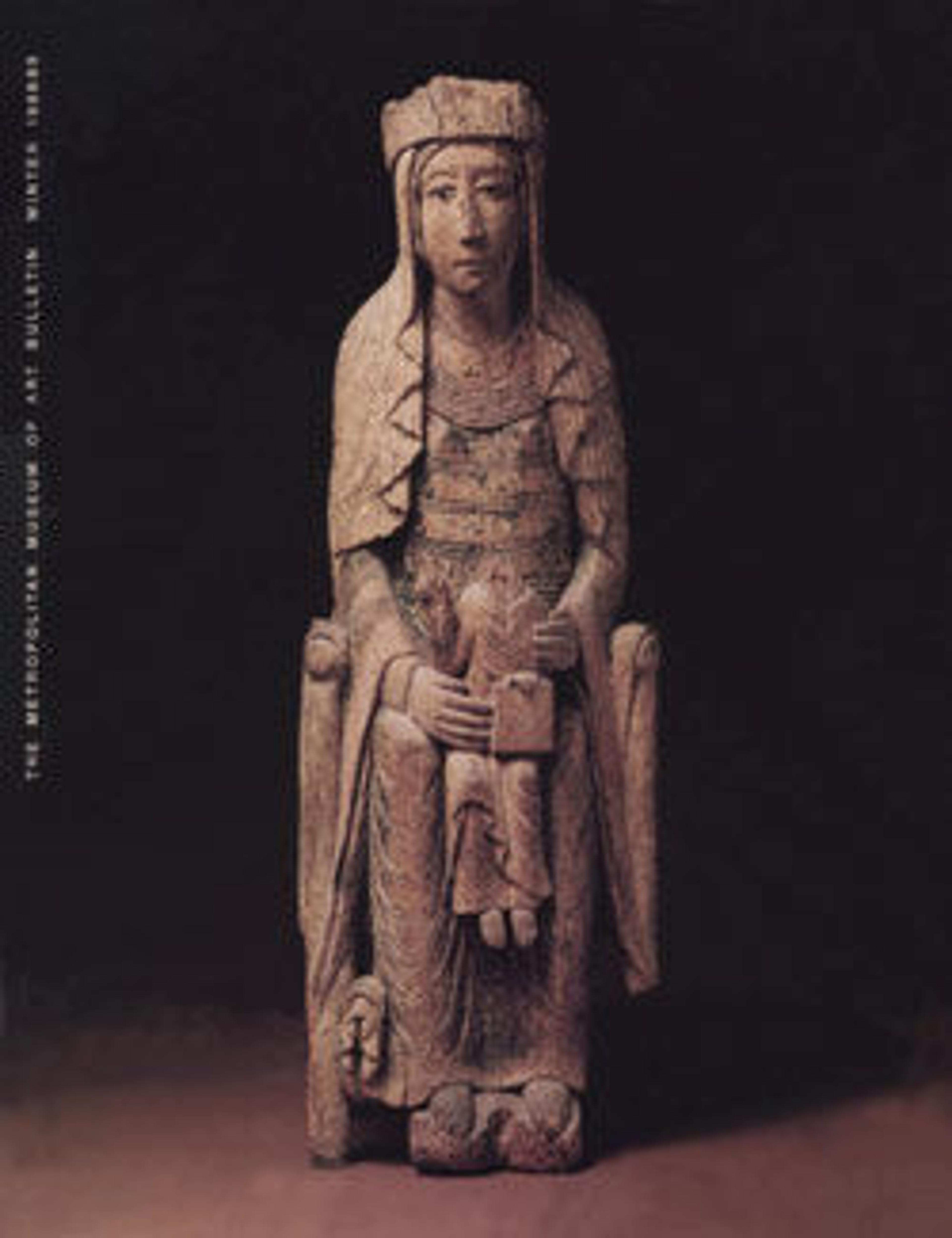Saints Christopher, Eustace, and Erasmus (Three Helper Saints)
The figures in this relief represent three of the fourteen Helper Saints, venerated as a group since the early 1300s. They became particularly popular in the south of Germany after 1446, when it was believed they appeared in a vision to a shepherd in Upper Franconia. Represented here are Saint Christopher carrying the Christ Child; Saint Eustace, a general in Trajan’s army who converted to Christianity; and Saint Erasmus, a Syrian bishop in episcopal regalia. The figures are carved from a single piece of limewood, with an added piece giving additional depth to Saint Christopher. The overlapping of figures allowed the three or four groups of saints to be joined with no apparent seam and also created a sense of great depth. The meticulous carving and small scale suggest that the original group was an independent relief in a niche or a shrine. Although Saint Christopher looks to the left, the general movement of the figures is to the right, indicating that this piece was originally at the left side of the relief. The finely carved details and the decorative punch work, all of which would have been obscured by a layer of paint, are evidence that the sculpture was never intended to be painted.
Artwork Details
- Title:Saints Christopher, Eustace, and Erasmus (Three Helper Saints)
- Artist:Tilman Riemenschneider (German, 1460–1531)
- Date:ca. 1500–1505
- Geography:Made in Würzburg, Germany
- Culture:German
- Medium:Limewood
- Dimensions:Overall: 21 x 13 x 4 3/4 in. (53.3 x 33 x 12.1 cm)
- Classification:Sculpture-Wood
- Credit Line:The Cloisters Collection, 1961
- Object Number:61.86
- Curatorial Department: Medieval Art and The Cloisters
More Artwork
Research Resources
The Met provides unparalleled resources for research and welcomes an international community of students and scholars. The Met's Open Access API is where creators and researchers can connect to the The Met collection. Open Access data and public domain images are available for unrestricted commercial and noncommercial use without permission or fee.
To request images under copyright and other restrictions, please use this Image Request form.
Feedback
We continue to research and examine historical and cultural context for objects in The Met collection. If you have comments or questions about this object record, please contact us using the form below. The Museum looks forward to receiving your comments.
